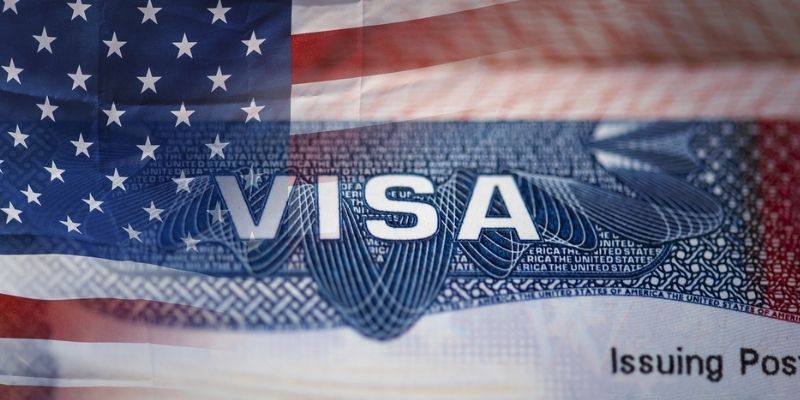
By Marta Lillo
In 2023, the EB-5 investor visa program encountered a series of announcements, situations, and issues. The implementation of the EB-5 Reform and Integrity Act (RIA) garnered much attention and concern from the industry. Specifically, the new project set-aside categories, updated responsibilities for regional centers (RC), ensuring investment funds’ safety, and improving the USCIS’s responsiveness, such as the processing time for applications, were at the forefront of the reform.
Also, policy and regulation updates, legal victories for investors, and process improvements made 2023 a busy year for EB-5.
EB-5 industry continues to have questions about RIA implementation
The EB-5 Reform and Integrity Act (RIA) entered its second year in 2023, but some aspects of the new law and the program still require clarity and immediate attention from the USCIS. These include new project categories, updated responsibilities for regional centers (RC), ensuring the safety of investment funds, and improving the agency’s responsiveness.
USCIS’s efforts to reduce the time to process EB-5 forms became clear
In the first half of the year, there was a significant increase in the number of Form I-526s processed, particularly approvals, suggesting that the USCIS reviewed new and pending applications faster. However, there was also an increase in form denials, indicating that the government immigration agency has increased scrutiny when reviewing petitions, highlighting the importance of thorough EB-5 application preparation.
By July, official figures showed that the USCIS was accelerating rural I-526E processing and adjudication times; the latter were clocking in at under a year. Additionally, I-526E approvals have significantly increased, with one case coming in at under three months.
Updates to EB-5 policy and regulation cleared uncertainty
The U.S. government changed the status of around 100 rural targeted employment areas and metropolitan statistical areas, which affects future EB-5 project planning and investor applications.
The USCIS updated its Policy Manual with guidance issued in October 2022 for regional center and investor petitions. It added and refined information on immigrant policies and procedures, including new integrity provisions from the RIA. The USCIS also launched an online self-service tool called Enterprise Change of Address (E-COA) to simplify updating visa applicants’ addresses.
The USCIS also had to clarify a February policy change involving calculating ages for children seeking permanent resident status, saying it could be used as an “extraordinary circumstance” to excuse some failed applications. The agency clarified that petitions for visa adjudications received before and after Aug. 24 could meet CSPA’s “sought to acquire” requirement.
The EB-5 investors achieved legal victories over their applications
EB-5 investors accomplished legal victories over negligent treatment or application delays this year.
First, the State of Vermont agreed to pay $16.5 million to resolve existing and potential lawsuits filed by approximately 850 EB-5 investors in the Jay Peak EB-5 projects scandal. The settlement settled 33 lawsuits by investors and a class action complaint by 121 investors who claimed Vermont did not provide adequate oversight of the EB-5 program.
Later this year, a group of EB-5 investors won a legal claim against the USCIS, resulting in adjudications of their delayed Form I-526 applications.
The ruling resulted in adjudications of their delayed Form I-526 applications filed before 2019. The Kentucky court ruling stated that the EB-5 investors had valid claims and concerns about the government’s handling of their petitions.
The threat of U.S. gov shutdown does not affect the EB-5 program
In late 2023, two potential federal partial government shutdowns loomed as the U.S. Congress failed to pass funding legislation required to finance the federal government before the beginning of the next fiscal year. The first was on Oct. 31, and the second was on Nov. 18. Congress ultimately passed funding.
However, the possibility of a shutdown did not affect the EB-5 visa program as the USCIS gets most of its funding through fee-based immigration processing, which means the agency should continue operating during a potential federal government closure.
Chinese and Indian EB-5 investors see final action dates and dates of filing advance
The Visa Bulletin for the Department of State ended the year with no changes to EB-5 final action dates or dates of filing following major movements in May and October.
At the time of this article’s publication, the final action date for EB-5 green card applications for Chinese investors remained Oct. 1, 2015, and Dec. 15, 2018, for Indian investors.
In the case of dates for filing, they have been the same since October, when they jumped one year from Jan. 1, 2016 to Jan. 1, 2017 for Chinese investors, and progressed almost a year and a half from Dec. 18, 2019 to Apr. 1, 2022 for Indian investors.
What should EB-5 investors expect in 2024?
Starting in 2024, the USCIS will increase the filing fees for EB-5 applications to cover expenses and reduce reliance on federal funding. The proposed fee hike for the I-526 application is around 204%, meaning the new fee will be $11,160. It is important to note that investors can get the money they invested back once they complete their EB-5 process.
Next year, more than 20,000 visas will also be available for successful EB-5 investors. This increase in authorizations is mainly due to carryover provisions in RIA.
Congress will continue to discuss two bills introduced this year that could affect EB-5 applications. The first is an update of the Build It in America Act. It aims to restore U.S. business competitiveness and secure global supply chains by banning foreign land sales to companies from “countries of concern” such as China, Russia, and Iran. This bill requires Senate approval to become law. The second bill is a bipartisan immigration solution that updates the Dignity Act (HR 3599) to address the nation’s immigration system.
DISCLAIMER: The views expressed in this article are solely the views of the author and do not necessarily represent the views of the publisher, its employees. or its affiliates. The information found on this website is intended to be general information; it is not legal or financial advice. Specific legal or financial advice can only be given by a licensed professional with full knowledge of all the facts and circumstances of your particular situation. You should seek consultation with legal, immigration, and financial experts prior to participating in the EB-5 program Posting a question on this website does not create an attorney-client relationship. All questions you post will be available to the public; do not include confidential information in your question.








